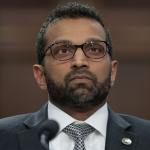
The Portuguese Election Marks a Shift to the Right
May 19, 2025
MAGA Melts Down as Trump Officials Say Epstein Killed Himself
May 19, 2025When President Donald Trump returned to office, he was laboring under a fundamental misconception about the war in Ukraine.
Trump seemed convinced that he could get Russia to stop fighting—as long as he kept Ukraine out of NATO and froze the battle lines, letting Russia keep the territory it already occupied. But that was never going to be enough for Vladimir Putin. He had other demands: strict limits on the size of Ukraine’s military, an end to its security cooperation with the West, and no European troops in the country. Moscow wanted a neutered Ukraine, not a neutral one.
Last week in Istanbul, Russian and Ukrainian officials held public talks for the first time since 2022, agreeing to exchange 1,000 prisoners each and to continue negotiating the technical details of a potential cease-fire. Some observers saw this as progress, but the underlying dynamics have not changed: Russia’s maximalist demands make a near-term settlement virtually impossible.
The next move will fall to Trump, who threatened last month to “take a pass” if the two sides don’t reach a deal. No one knows exactly what that means. Perhaps Trump will turn on Putin and increase support for Ukraine, but every indication suggests that’s unlikely. Two courses of action seem more plausible. First, Trump might decide to cut off military aid to Ukraine, which could finally tilt the war in Russia’s favor. Alternatively, he might maintain U.S. support but step back from peace talks until Russia indicates that it’s ready to compromise. This would subject Putin to a series of dilemmas as he tries to sustain a war that is costing him mightily.
Russia, Ukraine, and Ukraine’s European allies all know that a settlement is unlikely, at least in the near future. In the meantime, their main diplomatic goal is simple: Win over Trump. He wants a quick resolution, so Ukraine and Russia are each trying to convince him that the other side is the one prolonging the conflict. Whoever succeeds could shape his response to the failure of negotiations and reap significant benefits on the battlefield.
Initially, Trump saw Ukrainian President Volodymyr Zelensky, not Putin, as the stubborn one. Zelensky insisted on ironclad security guarantees from the United States, which Trump was unwilling to give. Meanwhile, Putin seemed to be striking up a friendship with Steve Witkoff, Trump’s special envoy.
The dynamic reversed soon after the Oval Office confrontation between Trump and Zelensky in February, which led the United States to temporarily withhold assistance. This catastrophe forced Kyiv to shift tack. Eleven days later, following advice from the United Kingdom, Ukraine shrewdly agreed to an unconditional 30-day cease-fire in talks with U.S. officials. Trump wanted an end to the war; now Zelensky could say that he did too.
Putin, however, would almost certainly never accept an unconditional cease-fire, which would leave significant issues unresolved, such as territorial disputes and Ukraine’s security guarantees. Russia would benefit in some ways—the country would get to keep the areas it currently controls—but Ukraine would be able to rearm without limits and admit European troops, both outcomes that Putin has balked at because he seeks Ukraine’s subjugation.
By agreeing to a cease-fire, Zelensky flipped the negotiation: Now Putin would be the one demanding conditions and denying Trump his peace deal. It seemed to work. Earlier this month, Vice President J. D. Vance said that Russia was “asking for too much,” even after the Trump administration proposed a plan that favored Putin. When Trump was asked about Vance’s statement, he said, “It’s possible he’s right.”
Perhaps sensing that he was losing leverage, Putin called for last week’s talks in Istanbul, where Russia and Ukraine had negotiated early in the war. Back then, the two sides had converged on a number of issues but were deeply divided on others; Russia, for example, wanted an effective veto over security guarantees and international assistance for Ukraine if war broke out again. This time, Putin was evidently hoping to persuade the United States to accept that same condition and put pressure on Ukraine.
Then Zelensky made another savvy move. Rather than rejecting the invitation, he said he would show up personally and meet Putin face-to-face. Zelensky knew that Putin was extremely unlikely to go, and indeed he didn’t. By calling the Russian leader’s bluff, Zelensky gave Trump another indication that Putin wasn’t serious about negotiating a cease-fire.
Still, Moscow could ultimately be rewarded for refusing to compromise. The basic diplomatic problem for the U.S. is persuading Putin to accept something he has fiercely opposed: a free and independent Ukraine that can defend itself and deter a future attack. Instead of continuing to try to solve that problem, Trump may simply end America’s intelligence cooperation, cut off its weapons supply, and perhaps even refuse to sell arms. Ukraine would face crucial shortages and rising casualties, while Russian forces would likely eke out more small gains that will add up over time.
Fortunately for Zelensky, however, Ukraine does not rely on the U.S. as much as it did in the first three years of the war. President Joe Biden’s decision to accelerate weapon transfers in the final months of his administration has given the Ukrainians most of what they need to fight for the rest of the year. And even though Trump clearly has no desire to renew aid for Ukraine, the country has cranked up its own defense industrial base with help from allies—especially its capacity to produce large quantities of drones, which have largely supplanted artillery on the front.
But if America continues to support Ukraine, Russia could have trouble generating enough manpower to sustain the invasion into next year. During its offensive of the past nine months, Russia has won only small slivers of territory and paid an enormous cost for them. The country has sustained more than 1,500 casualties a day, and nearly 800,000 since the start of the war, according to one U.S. military estimate last month. Putin is not a reasonable person, but he does sometimes adjust to battlefield realities. If his losses continue at this rate, he may have to order a larger mobilization, which he has been keen to avoid, or compromise at the negotiating table.
Judging by recent comments from Witkoff, Trump doesn’t seem to grasp that negotiations will succeed only if Russia feels pressure on the front lines. Neoconservatives believe that “war is the only way to solve things,” the president’s envoy said earlier this month. But Trump “believes that his force of personality—the way he is going to respond to situations—can bend people to do things in a much better way for the interests of the United States government, and I believe in that too.” Putin is far too determined to be swayed by mere personality.
There is a realistic way forward, though, that benefits both Trump and Ukraine. It will take a helping hand from Europe. The goal is simple: Show Putin that, as long as he sticks to his maximalist demands, he won’t make any significant territorial gains and will continue paying a huge price on the battlefield.
Although some of America’s military support is irreplaceable—particularly its intelligence cooperation, air-defense missiles, mid-range rockets, and heavy vehicles—Europe has the capacity to take on most of the burden of backing Ukraine. Given that Trump almost certainly won’t ask Congress to fund additional aid, leaders close to him, especially British Prime Minister Keir Starmer, could broker a compromise whereby the U.S. provides Ukraine only the kinds of assistance that Europe can’t—granted that Putin, not Zelensky, remains the primary obstacle to peace. The Europeans could also offer to pay the U.S. for its weapons and equipment, perhaps by tapping Russia’s sovereign assets.
This compromise would allow Trump to tell Americans that he has significantly reduced aid for Ukraine but has not abandoned it; even better, he could say that Europeans are footing the bill. This would help facilitate a deal with Russia by showing Moscow that victory is not possible. Ending this war quickly will require convincing Putin that it could go on indefinitely. As long as Trump denies this and flirts with ending U.S. support for Ukraine while letting Russia off the hook, the deal he’s desperate to close will continue to elude him.
#Trump #Wrong #Putin
Thanks to the Team @ The Atlantic Source link & Great Job Thomas Wright







